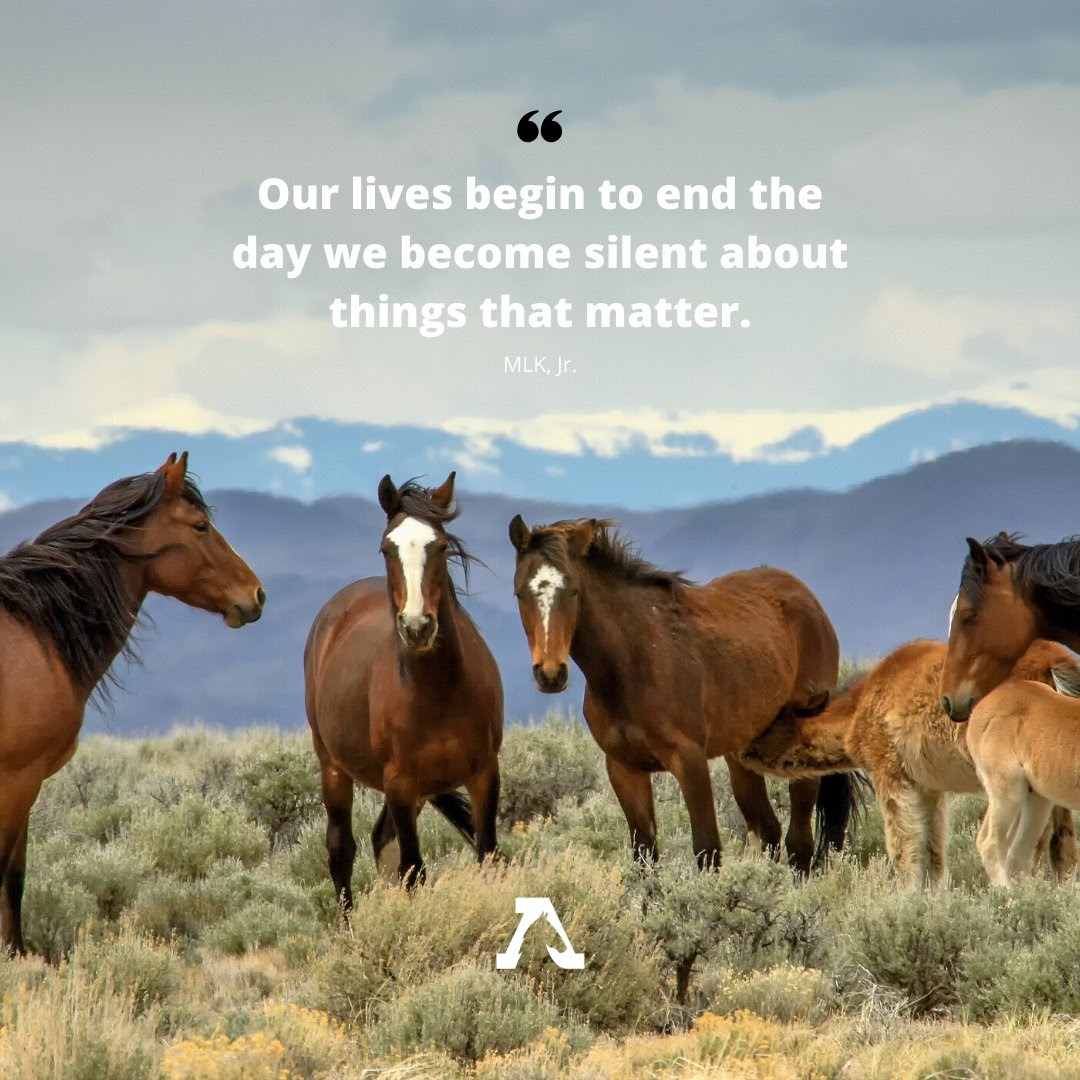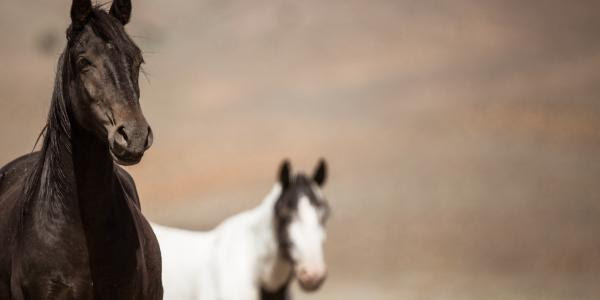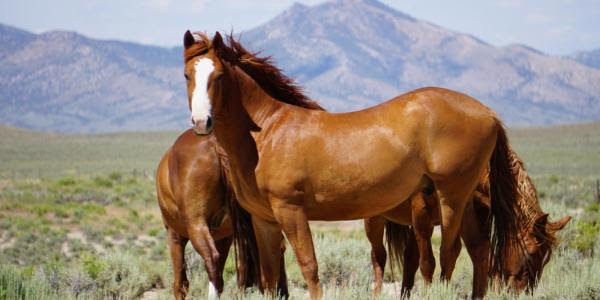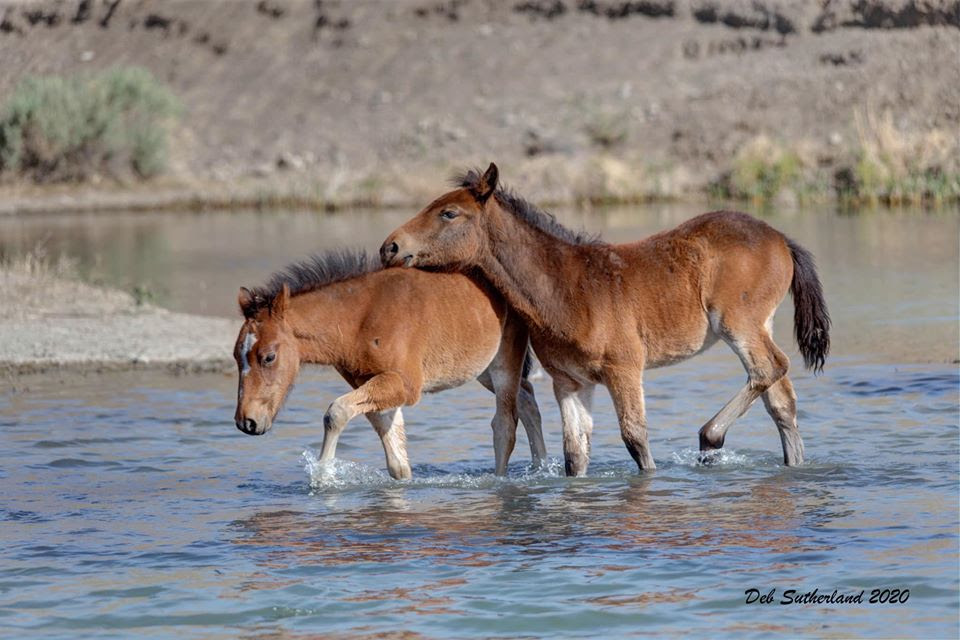We want to respect your time and personal bandwidth before covering recent developments
The following is from the American Wild Horse Campaign:
We want to be very cognizant of the reality facing our country. For many, this is an incredibly stressful time, financially and emotionally, as well as very painful, difficult, and upsetting.
We also know that many of you are using your platforms, resources, and time to address injustices and support your communities in a time of need.

All of us at AWHC continue to be inspired and amazed that, despite these hardships, so many of you continue to stay involved, stay engaged, and support not only us but America’s wild horses and burros. This is so important because the Bureau of Land Management continues its assault on these iconic animals and is even stepping it up during this crisis, when the public’s attention is directed elsewhere.
That’s evident in the BLM’s newly unveiled roundup schedule for the Summer/Fall, which we discuss below. But for this newsletter, we don’t want to share only the bad news. There’s some uplifting news as well, and we’ve included a few photos and videos that might brighten your day.
BREAKING: Bureau of Land Management Outlines Largest Removal Of Wild Horses In a Decade

Last month, the Bureau of Land Management submitted a report to Congress that outlines a plan to conduct mass roundups over the next 18-20 years and slash wild horse and burro populations on public lands by 70%.
The agency is planning to launch Phase 1 of its assault next month, with the roundup and removal of 5,000 federally-protected wild horses and burros from BLM lands between July 1 and September 30.
This means that, for Fiscal Year 2020 (Oct. 1, 2019 – September 30, 2020), over 12,000 innocent wild horses and burros will lose their freedom. To put this in perspective, that’s the largest number in the last decade.
If the BLM has its way, that is only the beginning. In its new report, the BLM is proposing to use helicopters to capture and remove 18,000-20,000 wild horses and burros from public lands EACH YEAR for the foreseeable future.
The roundups that will begin next month will have an added component of brutality. Using helicopters to drive wild horses and burros for miles in punishing summer temperatures often results in fatalities. Summer roundups are particularly tough on the tiny foals that are on the range this time of year.
These vulnerable babies have been literally run to death in past roundups, collapsing and dying as their mothers look on helplessly. The BLM lists the cause of death as “capture myopathy,” defined as “muscle damage that results from extreme exertion, struggle or stress.”
According to the BLM’s new roundup schedule, Nevada and Utah will be the epicenter of the summer roundups, the largest of which include:
- Shawave Mountains Herd Management Area, Nevada: 1,600 wild horses and 200 wild burros targeted for removal.
- Diamond Complex, Nevada: 1,200 wild horses to be removed.
- Sulphur Herd Management Area, Utah: 600 wild horses to be rounded up
AWHC will be onsite to document these roundups and we’re prepared to fight back if the BLM attempts to use the coronavirus pandemic to restrict public access. (Social distancing is not a problem out on the range.)
UPDATE: Wild Horse Champions in Congress Stand Up To The U.S. Forest Service

During April and May, AWHC and our partners at the Animal Welfare Institute sounded the alarm about the lack of critical safeguards and transparency associated with the U.S. Forest Service’s selling of wild horses from the Devil’s Garden Wild Horse Territory in California. (The horses were captured last fall in a helicopter roundup.)
The Forest Service has been selling these federally-protected wild horses for as little as $1 a piece, without meaningful limits on the number of horses a buyer can purchase at one time, and no adequate vetting procedures to ensure that buyers have the resources and facilities necessary to safely care for horses.
This lack of safeguards places the horses at higher risk of abuse or slaughter.
We brought our concerns to Congress and we’re pleased to announce that a bipartisan group of wild horse champions has taken action for the Devil’s Garden horses.
Representatives Ted Lieu, Brian Fitzpatrick, Steve Cohen, Joe Neguse, Jan Schakowsky, and Dina Titus sent a letter to the U.S. Department of Agriculture, which oversees the Forest Service, requesting that it adopt policies for its sales and adoption program to ensure oversight, transparency and protection, including measures to prevent federally-protected wild horses from ending up in the hands of kill buyers or others who might abuse and neglect them.
Additionally, these Congressmembers have called on the Forest Service to cease sales until these reforms are in place and pandemic restrictions are fully lifted.
We will continue to build on this important action to hold the Forest Service accountable for the welfare of the wild horses it is mandated under federal law to protect.
A Great Way To Stay Up To Date With Our Team In Nevada On The Virginia Range

AWHC is incredibly proud of the dedication and hard work of our staff and volunteers on the Virginia Range in Nevada.
We also know that many of you have reached out, asking if there is a better way to stay up to date with our team there: And there is!
Our team operates the Facebook group “Stay Wild! AWHC Nevada” where we post and share photos, videos, and updates on a near-daily basis to provide supporters with the opportunity to see and hear what they see in the field each and every day.
Check them out and join the group today!
A perfect example? One of our volunteers, from a safe distance, captured an incredible moment on video: The first steps of a wild foal with her mother.
Especially in these uncertain and difficult times, little videos like these can help lift our spirits and improve our mood. And they serve as a powerful reminder about why we do the work that we do.
If you would like to learn more about our program on the Virginia Range (the largest in the world!) you can read more here.
We are all in this together — thank you for being part of our herd!
American Wild Horse Campaign

